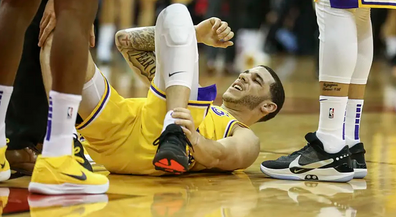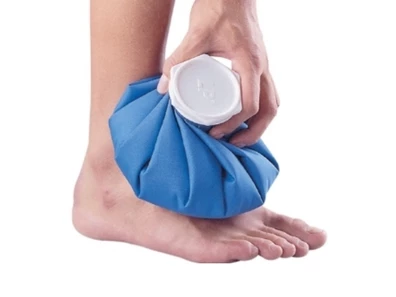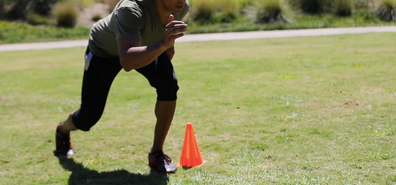Guiding you Through an Ankle Sprain
July 17, 2019
Ankle sprains are the most common sports injury. One in five patients seen in an emergency room for a sports injury present with an ankle sprain. An estimated one ankle sprain occurs per 10,000 people every day, which would translate to just under a million ankle sprains in Australia per year!
How do you sprain your ankle?

An ankle sprain occurs when the ankle moves into a position beyond what the ligaments are able to allow. This causes a tear of one or more of the ligaments, and this tear may be partial or may completely tear the ligament.
The most common mechanism is a combination of inversion (rolling the foot in) and slight plantarflexion (pointing the foot down) occuring while weight is being placed through the ankle, for example while changing direction during running, or while landing from jumping.
This movement will cause an injury to the anterior talofibular ligament (ATFL), which is by far the most commonly injured of the ankle ligaments. Often other structures, such as the joint surfaces of the bones, the muscles which evert (and therefore resist inversion of) the ankle and a joint just above the ankle where the ends of the tibia and fibular meet, are injured from this mechanism as well.
What do you do when you sprain your ankle?

Initially the aim of treatment you do yourself and which you may receive from a physiotherapist is to reduce pain, reduce inflammation and aid the healing process. An ankle sprain is sort of the classic example of an injury that you should manage with the RICE method of acute injury method. That is relative rest, applying ice for around 15 minutes every four hours, applying compression, and elevating it slightly above the level of the heart. Click here for an earlier blog post with more detail on acute injury management.
Some ankle sprains may require an X-ray to determine if a fracture has occurred. This is the case if you are very tender over the lateral malleolus (the knobbly bit of bone on the outside of the ankle), or over the base of the fifth metatarsal, or if you are unable to bear weight for four steps. Your physiotherapist will be able to help you determine if an X-ray is required.
Once the ankle sprain is no longer in the acute phase of healing (after around five days) treatment becomes less about reducing the pain and swelling, and more focused on restoring normal function to the ankle joint. This is necessary for safe and effective return to sport / normal activity, as well as helping to reduce the risk of reinjury. (Note: the biggest risk factor for suffering an ankle sprain is having suffered a sprain of the same ankle in the previous 24 months).
Restoration of normal function may include strengthening of muscles that control the ankle, such as the calf and everters, restoring normal range of movement in the ankle, retraining proprioception and then retraining sport-specific movements. Movements involving changes of direction and landing from jumping can be practiced at gradually increasing pace. This allows you to become comfortable with these movements while being able to focus on them, before having to apply these movements in the context of a training session or game.
How do you prevent ankle sprains in the first place?

It’s recommended that ankle taping or (preferably) bracing is applied for sport participation for six months following return from an ankle injury.
Similar to knee injury preventative programs, there is growing evidence that neuromuscular training reduces the risk of athletes suffering ankle sprains. This involves exercises such as balancing on one leg on an air disc or balance board etc, running agility drills and jumping-landing drills. Such programs have been shown to reduce the prevalence of ankle sprains in sports including volleyball, basketball, soccer and American football.
If you’ve suffered an ankle sprain, or would like advice on reducing your risk of suffering an ankle sprain, see our physiotherapist in Aubin Grove today!
-
 What Can Make Neck Pain a Headache?
What Can Make Neck Pain a Headache?
Often people experiencing a headache are also experiencing neck pain/tightness a...
-
 How Physio Can Help Your Headaches
How Physio Can Help Your Headaches
Headaches are no fun. Some people will only experience short-term headaches ever...
-
 Muscle Strains
Muscle Strains
Winter sports are back and with them come more muscle strains, particularly hams...
